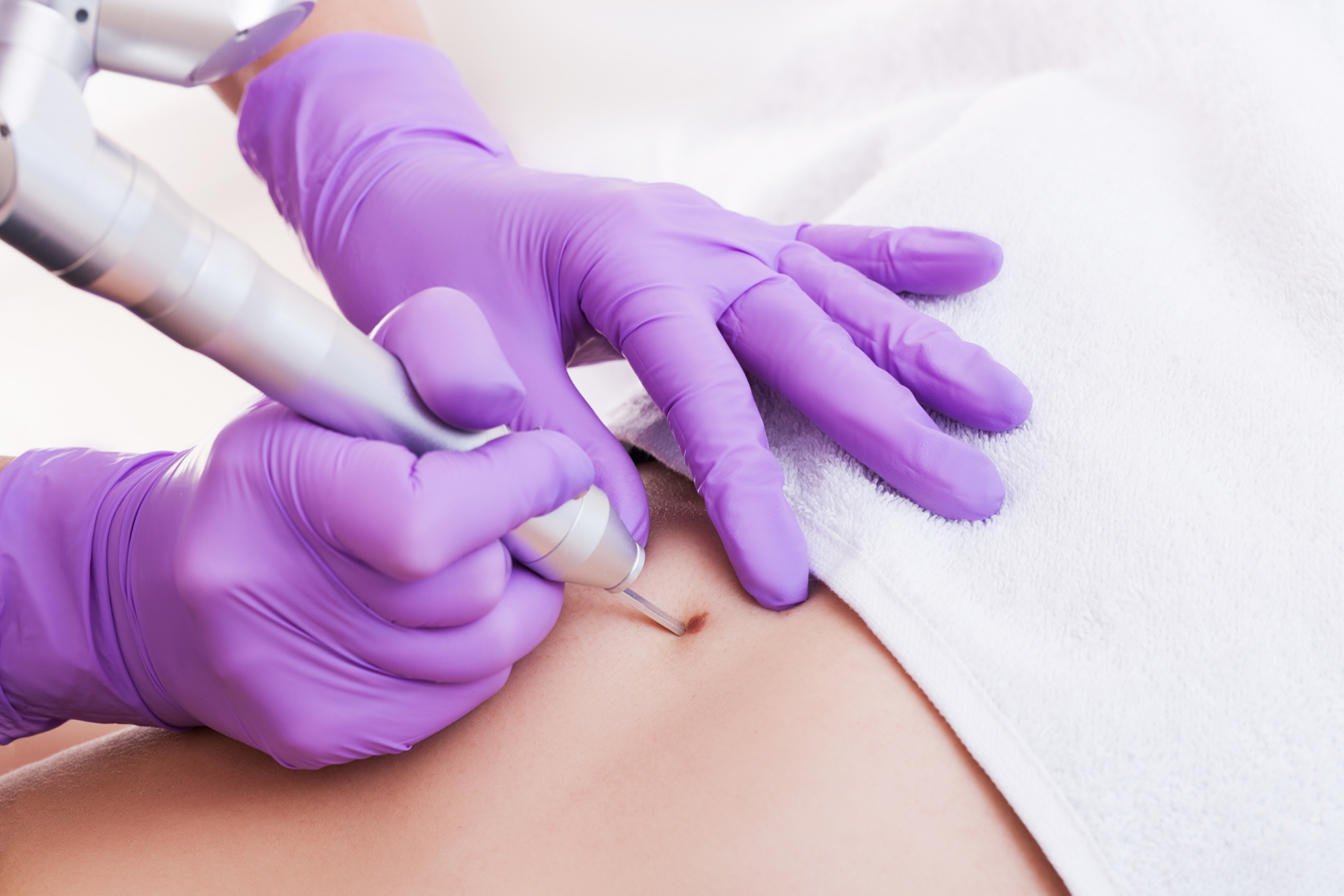Cosmetic lesion removal includes cryotherapy, cauterization, snip removal, and extractions
Many Epiphany Dermatology offices offer cosmetic lesion removal of benign skin growths that may include seborrheic keratoses, sebaceous hyperplasia (overgrown oil glands), skin tags, or milia. Because these procedures are considered cosmetic in nature, insurance typically does not cover removal of these common skin conditions. Depending on the nature of the cosmetic lesion, these procedures are performed by a board-certified dermatologist, trained medical staff, or a licensed aesthetician.
What are the different types of cosmetic lesion procedures?
Liquid nitrogen cryotherapy for seborrheic keratoses or brown spots
Patients who have had extensive sun exposure may start noticing brown, raised or flat, sometimes waxy benign growths on sun-damaged areas of the face or body. It’s always best to have any new or changing brown spots diagnosed by an Epiphany Dermatology provider so they can ensure it’s not cancerous. Seborrheic keratoses (also known as SKs), are non-cancerous and benign growths that appear on the skin as patients age. They are very common on the face, arms, and legs.
Your provider will use liquid nitrogen to quickly “freeze” these benign lesions. Depending on the size of the growths, a second treatment may be required to completely eliminate the lesion(s). Patients can expect the spot to appear red for approximately seven days and then flake off. Repeat treatments may be necessary.
Cauterization of sebaceous hyperplasia (overgrown oil gland)
Sebaceous hyperplasia is a common, benign condition of sebaceous glands in adults of middle age or older. It causes oil glands to become overgrown and while not dangerous, can be cosmetically unattractive. Cauterization of the glands, using a sterile epilating needle with electrocautery, will flatten sebaceous hyperplaysia skin lesions or bumps, diminishing their appearance on the surface of the skin.
While the procedure itself is fast, there may be a small amount of pain or discomfort. Small crusts of dry skin over the treated areas will occur and will slough over a few days. Over time, the sebaceous glands may again increase in size such that a touch-up treatment may be desired. Darker skin tones may have temporary increases in pigmentation at the site of treatment that will fade with time.
Snip removal of skin tags
Skin tags are common, acquired, benign skin growths that look like a small piece of soft, hanging skin. While skin tags can show up almost anywhere on the human body, they are harmless growths and can be snipped quickly and with very little pain.
Skin tags are snip-excised using sterile scissors. A small amount of bleeding is common, especially from larger skin tag removals. There is typically a very small amount of discomfort from skin tag removal procedures.
Extraction of milia (small, white bumps on the skin)
Milia are tiny, white cysts commonly seen on the cheeks and surrounding the eyes. They are painless and benign. Most of these bumps require that they be lanced to create an opening to allow the contents out.
The procedure will entail a very small nick on the surface of the bump to extract the milia. A small amount of bleeding may occur. Small bruises and temporary redness at the site of extraction are common. Mild discomfort or pain may occur during the procedure. Occasionally these lesions may recur and need to be re-treated.
Cosmetic Lesion Removal FAQs
Does insurance cover these procedures?
Most cosmetic lesions are cosmetic in nature and are therefore considered an elective procedure and most often not covered by insurance.
What is the risk of infection?
The risk of infection at the procedure site is possible, but extremely rare. The areas of removal on the skin and the instruments are always sterilized prior to the procedure.
Do these procedures hurt?
There can be a small amount of discomfort or pain during the procedure, but pain following the procedure is very minimal. You can discuss any post-procedure care that may be necessary to minimize any pain following the procedure.
Is there scarring?
Barely perceptible scarring is possible with removal of larger skin tags with a broad base. Most skin tag removals leave no visible scars. There is typically a very small amount of discomfort from skin tag removal procedures.

